Michael: Please tell us who you are
Justin: Hi. My name is Justin Davey and I’m a British-Irish-American independent filmmaker.

Michael: You recently released an independent documentary called “Montana Divided: a Climate Change Story” could you please describe what this film is about?
Justin: This film came from an idea I had at the UN Climate Change conference in Bonn, Germany in May, 2017. It was co-created with climate change expert Sam Harris.

The film focuses on the conversation around climate change in Montana, what climatic changes are being observed and what might be possible for the state in terms of policy and investment.
Michael: Why is Montana an important place to tell a story about Climate Change?
Justin: The issue of climate change denialism strikes at the heart of a problem in the US at the moment, which is intellectual dishonesty. In my opinion, it is difficult to solve problems if you don’t admit the causes. Politicians have always lied to gain power but the citizenry now appear less able to determine fact from falsehood due to misinformation campaigns. I wanted to explore that in relation to climate change in a place that is revered, loved and Republican. In particular, their glaciers are melting right in front of their eyes, so climate change is happening (rapidly, geologically speaking) and I was curious to understand how they explain that fact.

Michael: Talk about your connection with Montana…
Justin: For years, Montana lived in my imagination as this wild, romanticized land of free pioneers and homesteaders, so I wanted to discover that truth and meet some Montanans. Secondly, because of contemporary divisions in American society and the difficulty they pose for big societal challenges, I wanted the state to be heavily Republican. I wanted to meet them on their turf. You never know a place until you sleep there, smell the air, drink the water, drive the roads, climb the hills, get drunk in their bars, offer a “hello” to strangers etc. So gaining an understanding of the Montanan culture and making new connections was part of why I made this film.
When Sam and I left Montana we were on a palpable high from the experiences we had and the people we met. I think it changed both of us for the better and we both gained a huge respect and admiration for the people who live there.

Researching the state’s history, I learned about the Irish settlers and the impressive life of Marcus Daly, an immigrant from County Cavan, who essentially built Montana in the late 1800s. His Anaconda Copper Mining Company employed half the state’s residents at one point and provided most of the copper for Thomas Edison to electrify America.

The Native American history also intrigued me but I learned of it in Montana, where I got the impression the conflict between communities felt more current than historical to some.
Lastly, the state does have a relatively high suicide rate (see WSJ video: Deaths of Despair). Perhaps this is due to economic challenges, drugs, social isolation or bullying online. I don’t know. I just want people to see how lucky they are to be in Montana and that they matter.

Michael: What were your influences in making this film?
Justin: When America elected Trump, there was a lot of tribalism and xenophobia in the ether. I was in Marrakech for COP22, and while it is old news to those at the UN, it was powerful to see the global mélange of people attempting to work together. There’s a certain electricity in the air when all the peoples of the world meet and I felt at home in that environment. That experience inspired me to dream bigger and use film in a new way. So if I hadn’t started working with UN Climate Change in 2016, I don’t think I would have felt the urgency to make this film.
In terms of actual filmic influence, I’m quite swayed by traditional romanticism of stories about hardship, family, love and redemption. As someone born in the 80s, I know it is clichéd but my idea of Montana was shaped by classic 90s films, e.g. A River Runs Through It, Legends of the Fall. As I researched further, I saw the landscape in many others – The Shining (also: see Blade Runner ending), The River Wild, and more recently The Revenant. So I had this constructed vision of Montana and a rich filming history drawing me in saying, “whatever happens, going to Montana is a good idea.” (Also, Sweetgrass is a 2009 documentary I’ve been meaning to watch)

In terms of documentary filmmakers – Adam Curtis, Werner Herzog, Ken Burns, Michael Moore, Louis Theroux…I’m not sure they influenced my style but their work inspired me before this project ever came up.

Michael: Describe the creation process of this documentary
Justin: Before filming, Sam and I didn’t know one other very well. We were a bit nervous we’d be spending 21 days together driving 7000 miles, eating, sleeping, camping and of course, filming 24 hours/day. Fortunately, after the first day driving 14 hours to Chicago, she seemed accustomed to my odd sense of humour and we got on quite well.

Sam had set up several meetings with professors/experts. We had our plan but that schedule was thrown out the car window the day we arrived. A Native American tribal government agreed to an on-camera interview and then changed their minds as I pressed record. Coal workers said they wouldn’t say anything on camera and their facial expressions said go away. There was meant to be an entire section dedicated to women’s empowerment where Sam would summit Mt Cleveland and then later Granite Peak (cheesy, I know) but since the forest fires were raging, half of Glacier was closed and we ran out of days to hike Granite, we had to scrap it. With a limited time frame, we made do with what we had.

Michael: Name the most challenging and rewarding parts of doing this film.
Justin:
The most challenging part was the edit. You come up with the idea, you assemble the parts, schedule it out, drive across the country, brave the weather, camp in the snow, sleep in filthy motels, search for good coffee, climb mountains, avoid crashing the drone, film 50 interviews or so and manage to only get one speeding ticket in 21 days. Yet the edit is the hardest part. How do you pull all the footage together? That’s the most challenging part, especially when it is just Sam and I.

The most rewarding part was meeting all the people, feeling the sense of vulnerability and freedom one gets in the isolated pockets of Montana and gaining a new appreciation for the challenges people face and surmount in a place like that.

Michael: Could you share your thoughts on the public perception of Climate Change in the State of Montana?
Justin: You’ll have to watch the film to get an answer to that question! 🙂
Michael: Please give us your plug!
Justin:
-
- Well, I just uploaded some work to my website.
- Links to the Montana film are here.
- My gram is @justinkdavey.
- At the moment, I’m either in San Francisco or England.

Michael: What are you working on next?
Justin: With my previous experience in fiction and now having seen Montana, I’d love to raise a small amount of funding ($25-50K) to make a violent, contemporary western short film in a place like Butte or Shelby and enlist as many locals as possible. But again, that’s just a dream.
Right now I’m thinking about a tech platform (vague, I know) and a couple film ideas while looking for new collaborators. I feel a strong desire to spend more time back home in England but that is countered by wanting to head to SE Asia and spend a month filming in the jungle. Nothing wrong with another adventure!
Michael: Thanks for the interview Justin, we look forward to seeing the film on a festival screen in the near future!

Justin Davey is a self-taught filmmaker currently in San Francisco. He has a background in tech and politics.
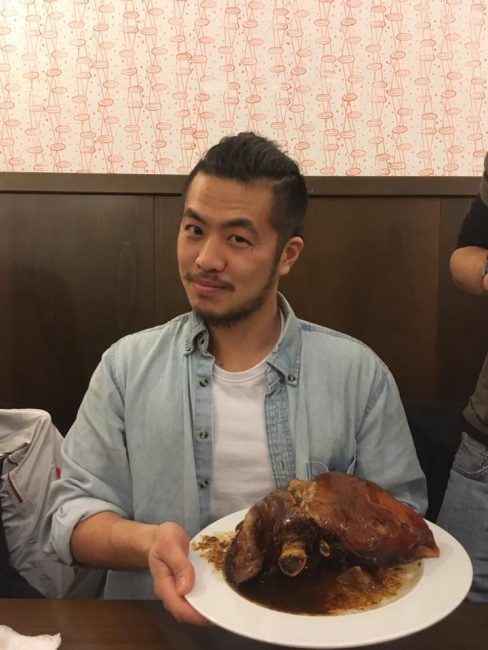




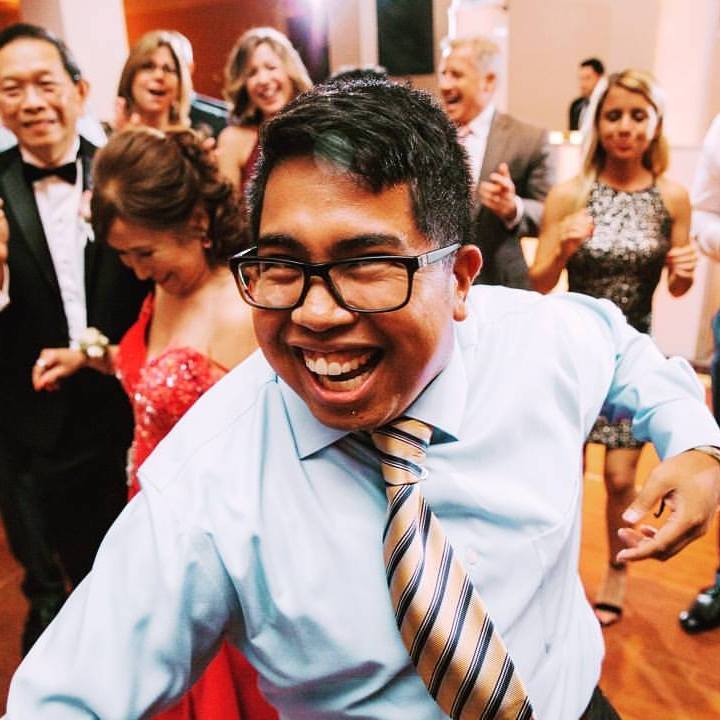
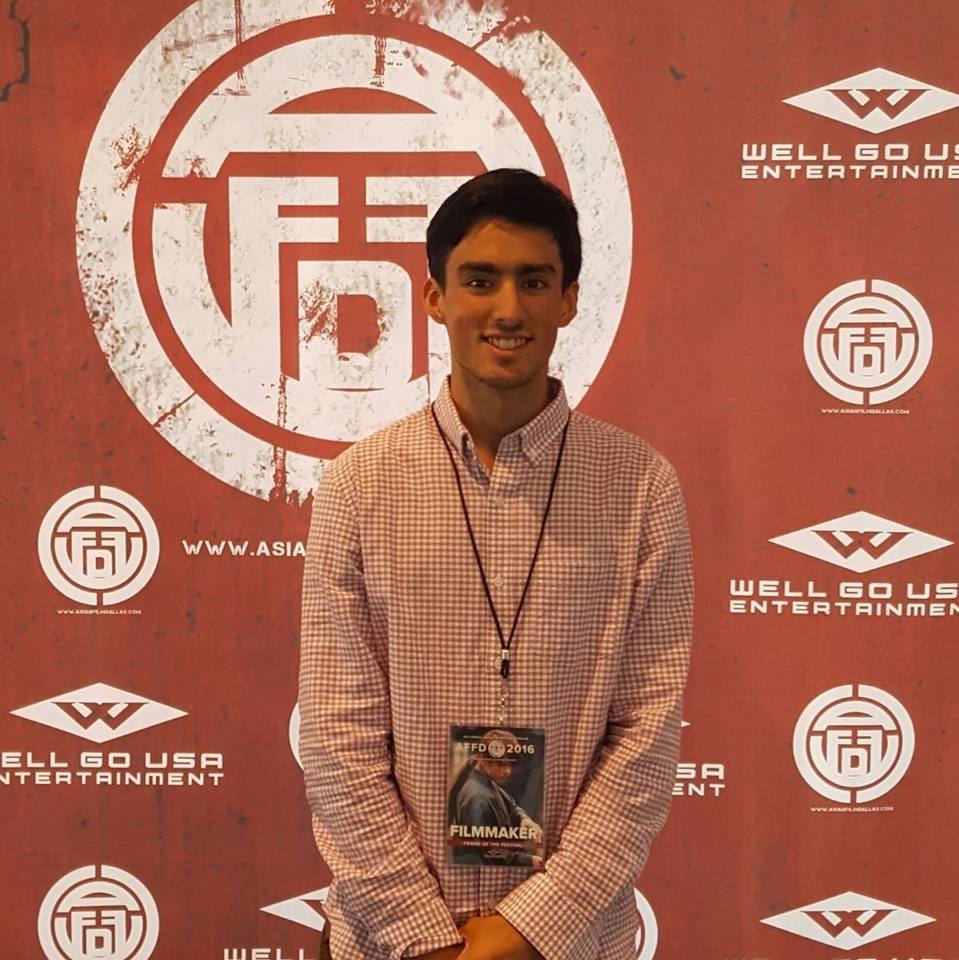

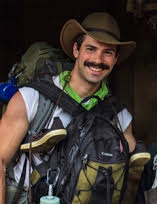 Chris Bellizzi is a photographer, filmmaker, and survival-based cocktail craftsman. A perpetual fan of road trips and window seats, he recently embarked on a nine-month journey across thirteen countries capturing an episodic documentary on candid cultural perception. Back now in the great state of New Jersey editing this project, Chris is looking forward to making new connections and finding new perspectives to keep the creative juices flowing.
Chris Bellizzi is a photographer, filmmaker, and survival-based cocktail craftsman. A perpetual fan of road trips and window seats, he recently embarked on a nine-month journey across thirteen countries capturing an episodic documentary on candid cultural perception. Back now in the great state of New Jersey editing this project, Chris is looking forward to making new connections and finding new perspectives to keep the creative juices flowing.
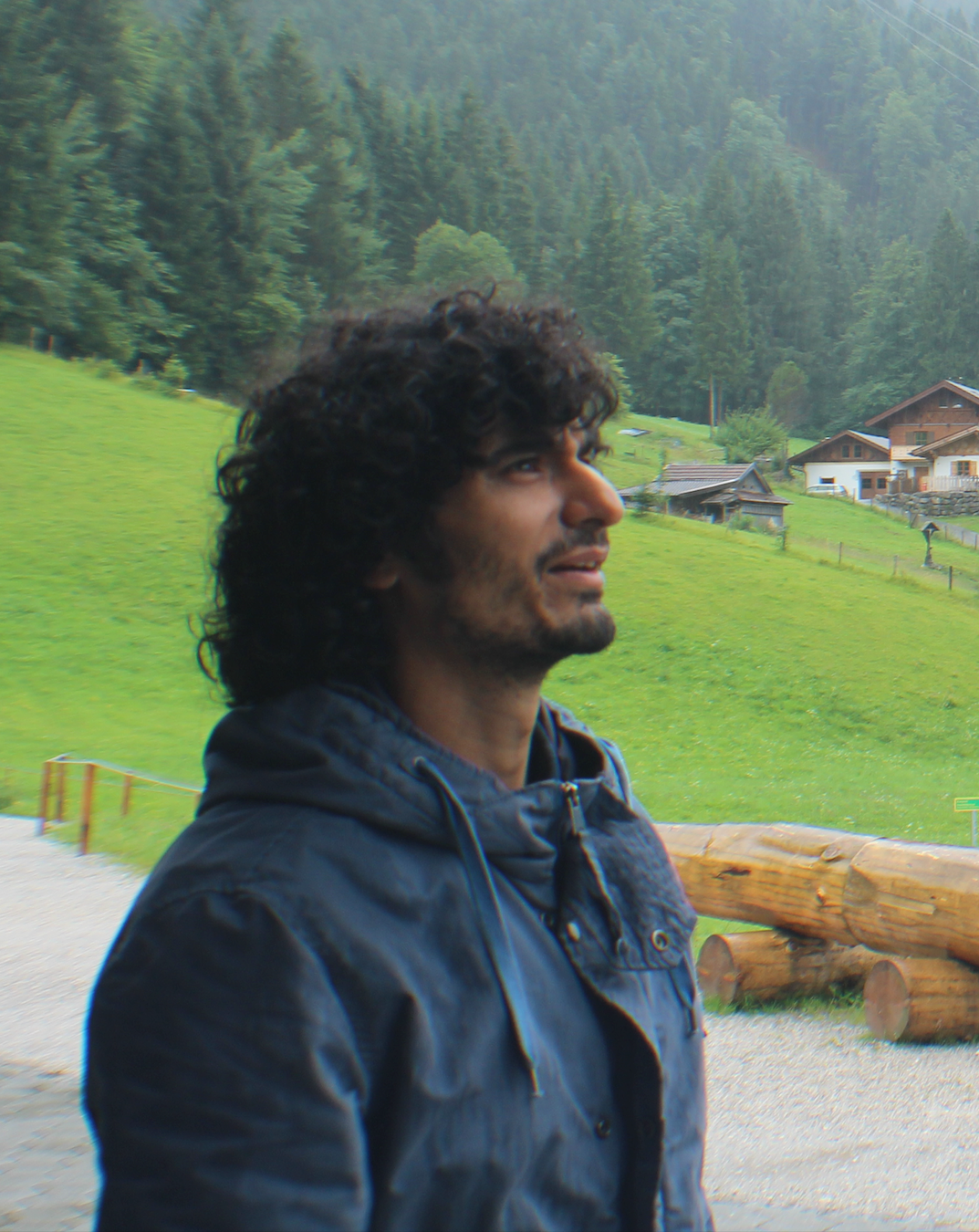
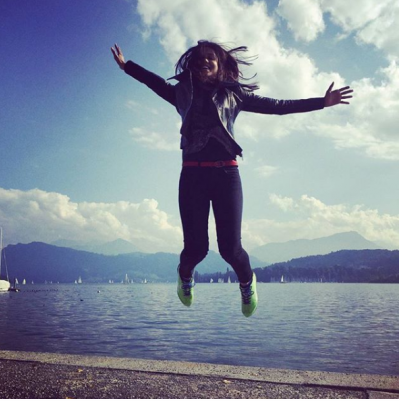


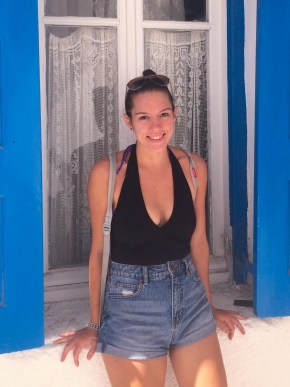
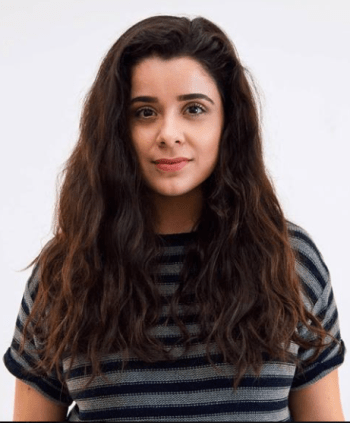
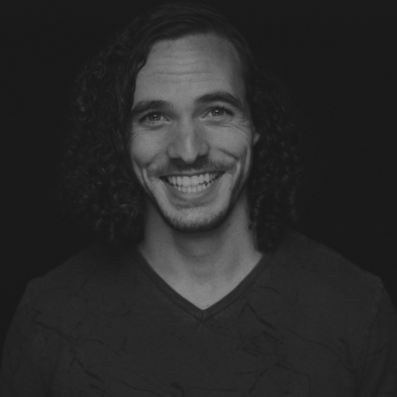
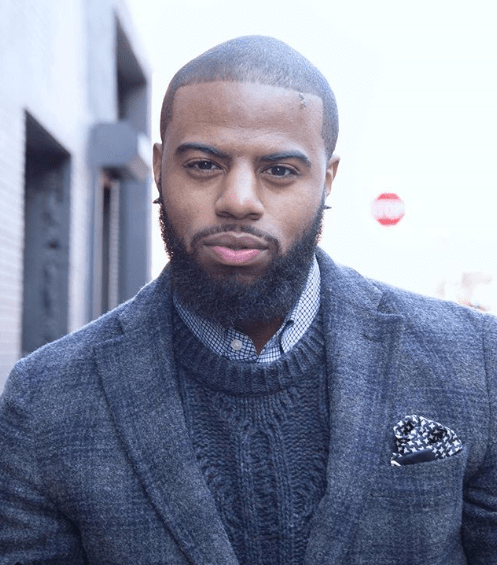





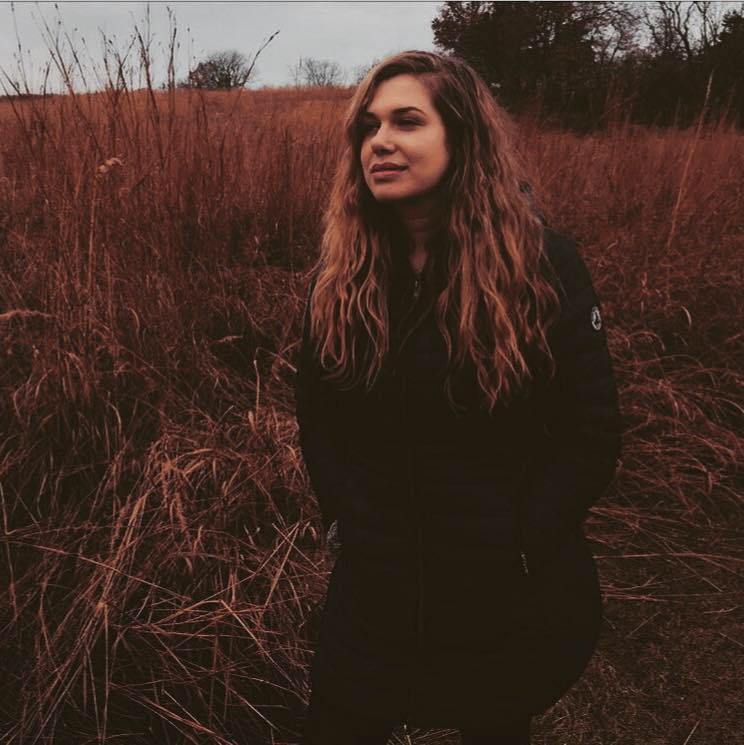


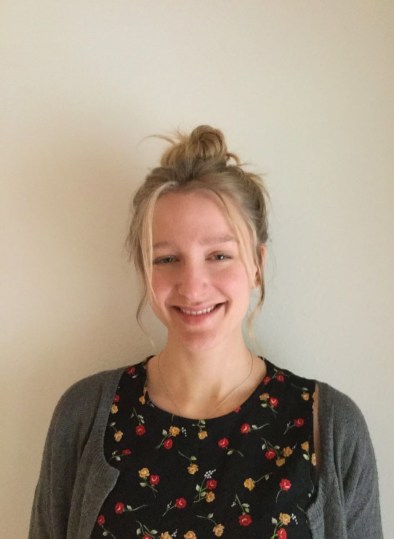
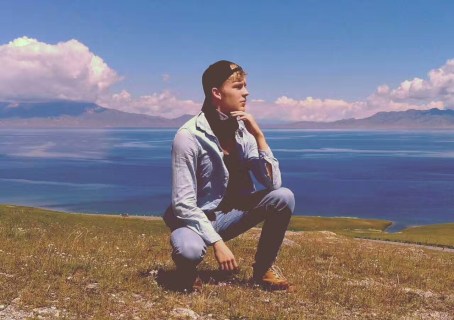

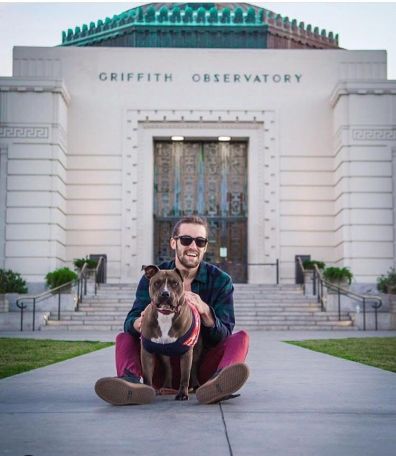

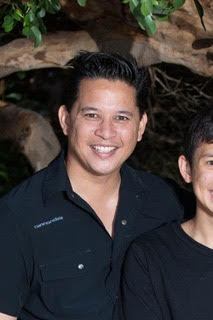





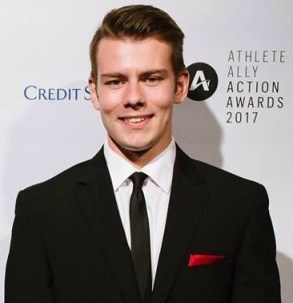
 Stephen is a South African / British Engineer, passionate about new ideas and innovations. He enjoys any kind of adventure sports and the outdoors. Since 2016, he has been pursuing the goal to bring empty houses back into use, thus, bringing life back to communities, as the
Stephen is a South African / British Engineer, passionate about new ideas and innovations. He enjoys any kind of adventure sports and the outdoors. Since 2016, he has been pursuing the goal to bring empty houses back into use, thus, bringing life back to communities, as the 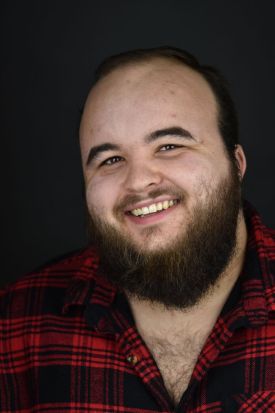 Sean Pollock is a multi-disciplinary writer, director, designer, and artist. Recent credits include: American Juggalo (Porterspace Residency/Vital Joint/The New Ohio) A Very…Scientology Pageant: In Concert (The Green Room 42 & 54Below), Laundryfest, The Bed Show, Super Short Site Specific Festival, Phantom of the Paradise (Secret Loft), Intimate Bar Plays, #serials (The Flea), I’m Smiling Because I’m Uncomfortable (NYC and Touring. Winner: “Outstanding Site-Specific Performance” San Diego Fringe 2018). Off-Broadway: Trump Rally (United Solo/Theatre Row). He currently serves as the Literary Associate for The Dirty Blondes and is a company member of Unattended Baggage. Training: Ithaca College, NTI, Directors Lab North, Directors Lab Chicago, Directors Lab West.
Sean Pollock is a multi-disciplinary writer, director, designer, and artist. Recent credits include: American Juggalo (Porterspace Residency/Vital Joint/The New Ohio) A Very…Scientology Pageant: In Concert (The Green Room 42 & 54Below), Laundryfest, The Bed Show, Super Short Site Specific Festival, Phantom of the Paradise (Secret Loft), Intimate Bar Plays, #serials (The Flea), I’m Smiling Because I’m Uncomfortable (NYC and Touring. Winner: “Outstanding Site-Specific Performance” San Diego Fringe 2018). Off-Broadway: Trump Rally (United Solo/Theatre Row). He currently serves as the Literary Associate for The Dirty Blondes and is a company member of Unattended Baggage. Training: Ithaca College, NTI, Directors Lab North, Directors Lab Chicago, Directors Lab West. 


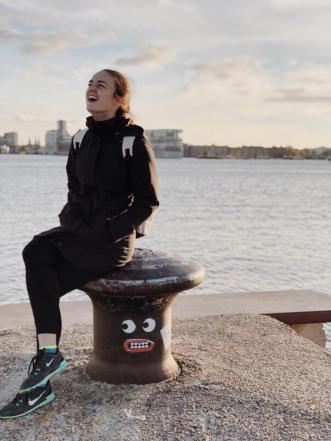


 “Hi. My name is Patrick Higgins and I am the founder and President of
“Hi. My name is Patrick Higgins and I am the founder and President of 






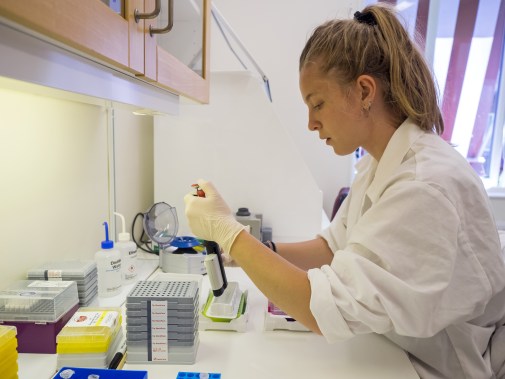
 Anonymous: For our post titled “Caracas in Crisis” we conducted an interview with a young woman who chose to remain anonymous. She is a student living through the political turmoil that has drastically altered everyday life for the people of Venezuela.
Anonymous: For our post titled “Caracas in Crisis” we conducted an interview with a young woman who chose to remain anonymous. She is a student living through the political turmoil that has drastically altered everyday life for the people of Venezuela.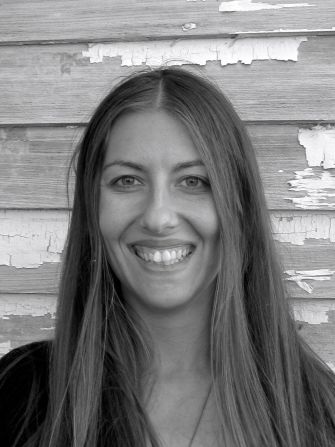 Arianna Soldati: is a Volcanologist and Science Communicator. Originally from Italy, she is currently based in Munich, Germany, but will happily go wherever her unusual career may bring her in the future. She only enjoys hiking “mountains” that have a crater on the top, and she will never tire to talk about them.
Arianna Soldati: is a Volcanologist and Science Communicator. Originally from Italy, she is currently based in Munich, Germany, but will happily go wherever her unusual career may bring her in the future. She only enjoys hiking “mountains” that have a crater on the top, and she will never tire to talk about them.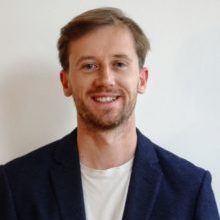 Alexander Watson: As a forest investment expert and a manager of several sustainable reforestation projects in Latin America and South East Asia, Alexander has a broad experience in implementing and promoting international forestry projects. To his academic merit, he holds a Bachelor in Forestry from the Technical University of Dresden in Germany and a Postgraduate Certificate in Social Banking and Social Finance from the University of Plymouth in the United Kingdom.
Alexander Watson: As a forest investment expert and a manager of several sustainable reforestation projects in Latin America and South East Asia, Alexander has a broad experience in implementing and promoting international forestry projects. To his academic merit, he holds a Bachelor in Forestry from the Technical University of Dresden in Germany and a Postgraduate Certificate in Social Banking and Social Finance from the University of Plymouth in the United Kingdom. Morgan Randall: Morgan is an American data scientist working in a small town outside of Munich. He enjoys learning about the world through drawing the strangers around him with both his hands.
Morgan Randall: Morgan is an American data scientist working in a small town outside of Munich. He enjoys learning about the world through drawing the strangers around him with both his hands. Health Us Nepal:We are a small spanish NGO acting in Nepal. We provide health to Humla, the remotest and poorest region in Nepal. We can do that thanks to the heart of Marc, our doctor. He was adopted by a catalan family, and after he finished medicine studies, he decided to go back to his origins and start the project of his life.
Health Us Nepal:We are a small spanish NGO acting in Nepal. We provide health to Humla, the remotest and poorest region in Nepal. We can do that thanks to the heart of Marc, our doctor. He was adopted by a catalan family, and after he finished medicine studies, he decided to go back to his origins and start the project of his life. Mandy Ho:Mandy is from Germany, Hong Kong, and Vietnam. A Third Culture Kid, she is currently living in Amsterdam, the Netherlands, but who knows how long it'll be until her next adventure. When she's not raising awareness about gender equality, climate crisis, and mental health, she loves to get out of her comfort zone and experience new things such as aerial and bungee dance classes and volunteering at TedX and hopefully the UEFA Euro 2020
Mandy Ho:Mandy is from Germany, Hong Kong, and Vietnam. A Third Culture Kid, she is currently living in Amsterdam, the Netherlands, but who knows how long it'll be until her next adventure. When she's not raising awareness about gender equality, climate crisis, and mental health, she loves to get out of her comfort zone and experience new things such as aerial and bungee dance classes and volunteering at TedX and hopefully the UEFA Euro 2020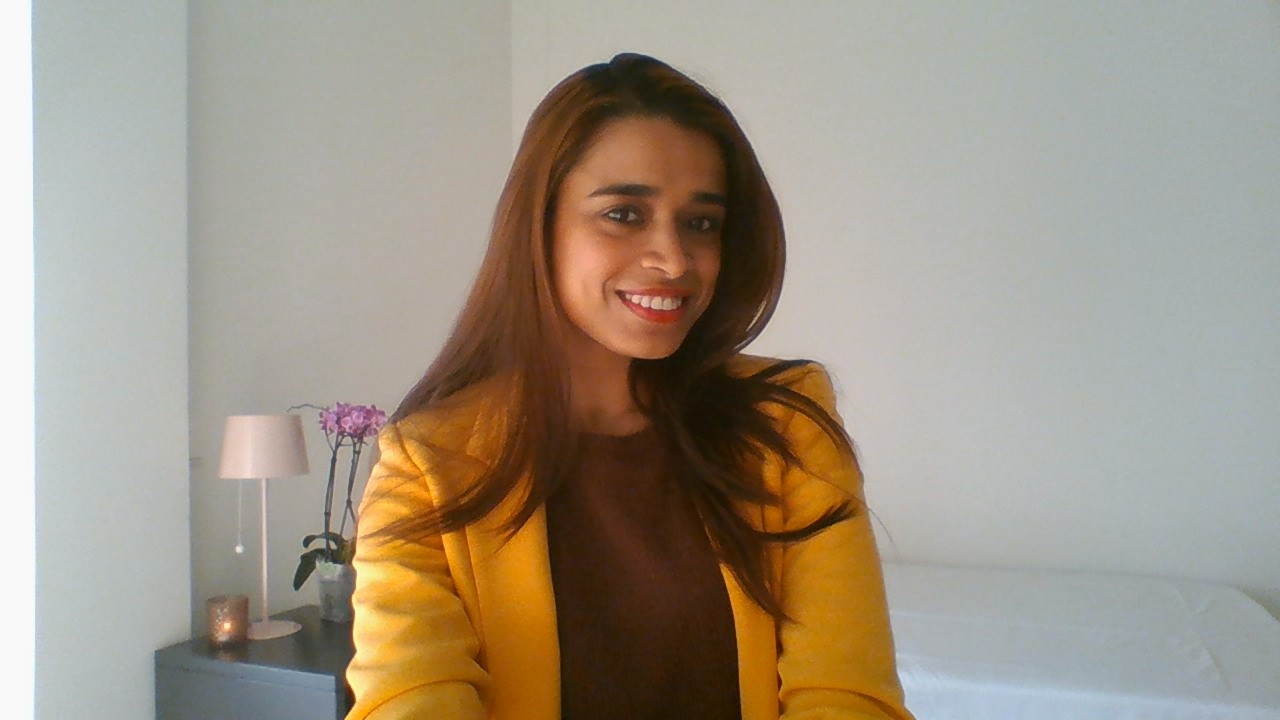 Smita and Earthoholics:I am fascinated by the wonders of nature and find myself on this journey exploring beautiful minds, interesting cities, cultures and people.
Smita and Earthoholics:I am fascinated by the wonders of nature and find myself on this journey exploring beautiful minds, interesting cities, cultures and people. WeBuilding is a Berlin-based non-profit organization founded by an international group of architects, united by a common purpose: to help deprived communities through sustainable building projects. We serve as the support for the local NGOs, helping them to further develop their own projects. With our architectural background, we believe we can provide valuable technical expertise so that both the construction and the design can be done as efficiently as possible.
WeBuilding is a Berlin-based non-profit organization founded by an international group of architects, united by a common purpose: to help deprived communities through sustainable building projects. We serve as the support for the local NGOs, helping them to further develop their own projects. With our architectural background, we believe we can provide valuable technical expertise so that both the construction and the design can be done as efficiently as possible. gaia-liNc is a german-based organization formed by Latin-American and European members committed with the sustainable development of Latin America’s communities and their territories.
gaia-liNc is a german-based organization formed by Latin-American and European members committed with the sustainable development of Latin America’s communities and their territories. Erin Skoczylas is an American photojournalist and communications specialist living in Berlin Germany. Since her start in photography in 2013, Erin has covered socio-environmental topics and issues in areas such as the Brazilian Pantanal, the Peruvian Amazon, and an immigration crisis in Central America. She is currently in her masters of International Relations and Cultural Diplomacy to explore the role of communications between stakeholders to encourage environmental policy. You can see more of her work at
Erin Skoczylas is an American photojournalist and communications specialist living in Berlin Germany. Since her start in photography in 2013, Erin has covered socio-environmental topics and issues in areas such as the Brazilian Pantanal, the Peruvian Amazon, and an immigration crisis in Central America. She is currently in her masters of International Relations and Cultural Diplomacy to explore the role of communications between stakeholders to encourage environmental policy. You can see more of her work at  Silicon Drinkabout is a free weekly event that brings people from the startup scene in Munich together. News, updates and events around Silicon Drinkabout Munich
Silicon Drinkabout is a free weekly event that brings people from the startup scene in Munich together. News, updates and events around Silicon Drinkabout Munich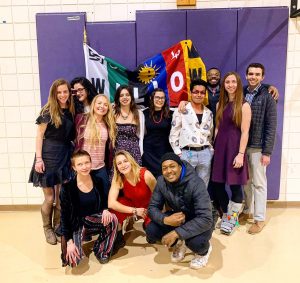 Eagle Rock School and Professional Development Center is a full-service not-for-profit educational reform organization. Eagle Rock operates a tuition-free, year-round residential high school in Estes Park, Colorado, and provides professional development services at school and community sites around the United States.
Eagle Rock School and Professional Development Center is a full-service not-for-profit educational reform organization. Eagle Rock operates a tuition-free, year-round residential high school in Estes Park, Colorado, and provides professional development services at school and community sites around the United States. Kartiki Gonsalves was born and raised in India, She documents our natural world to better understand the profound connection that we share with it by bringing awareness to the challenges we face, but also focuses on solutions with her projects and shows success stories where conservation is working. Her ultimate goal is to create a lifetime body of beautiful work that has deep meaning and that carries a message of hope for preserving what we have which will make a difference for the generations to come. She is currently working on a nature documentary in southern India on the bond between an orphaned baby elephant and his human caregivers. Kartiki is also deeply in love with Orcas and enjoys kayaking.
Kartiki Gonsalves was born and raised in India, She documents our natural world to better understand the profound connection that we share with it by bringing awareness to the challenges we face, but also focuses on solutions with her projects and shows success stories where conservation is working. Her ultimate goal is to create a lifetime body of beautiful work that has deep meaning and that carries a message of hope for preserving what we have which will make a difference for the generations to come. She is currently working on a nature documentary in southern India on the bond between an orphaned baby elephant and his human caregivers. Kartiki is also deeply in love with Orcas and enjoys kayaking.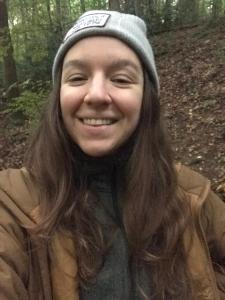 Melissa Angel is an environmental communicator working at the Global Landscapes Forum. She is also an avid banjo player and mom to a dog named Morby!
Melissa Angel is an environmental communicator working at the Global Landscapes Forum. She is also an avid banjo player and mom to a dog named Morby!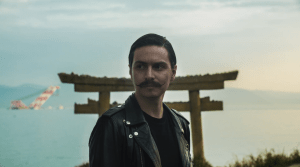 Felipe Guarin is a creative executive living in Tokyo, Japan, with strong branding and marketing experience and a passion for technology, design and applied creativity complemented with a successful start-up experience. He studied Political Science at the Externado University in Bogotaì and later did a Masters in Marketing at the Pompeu Fabra in Barcelona and a Master in media design at Keio University in Tokyo. He is a Colombian experiential designer and entrepreneur who started working as a creative for BBDO. His experience at BBDO gave him enough confidence led him to start his design studio called Whatever Works. The studio has quickly become a hub for brands looking for a novel way to connect with their consumers. Some clients include Discovery Chanel, Jack Daniel’s, and Netflix. Felipe has been researching over the last 3 years the relation between games, sports, and technology he started in the field intuitively and ended co-founding Kinix a video game studio based in Japan that aims to dissolve the line between sports and e-sports.
Felipe Guarin is a creative executive living in Tokyo, Japan, with strong branding and marketing experience and a passion for technology, design and applied creativity complemented with a successful start-up experience. He studied Political Science at the Externado University in Bogotaì and later did a Masters in Marketing at the Pompeu Fabra in Barcelona and a Master in media design at Keio University in Tokyo. He is a Colombian experiential designer and entrepreneur who started working as a creative for BBDO. His experience at BBDO gave him enough confidence led him to start his design studio called Whatever Works. The studio has quickly become a hub for brands looking for a novel way to connect with their consumers. Some clients include Discovery Chanel, Jack Daniel’s, and Netflix. Felipe has been researching over the last 3 years the relation between games, sports, and technology he started in the field intuitively and ended co-founding Kinix a video game studio based in Japan that aims to dissolve the line between sports and e-sports. Lakshika Serasinhe is a cinematographer and director from Galway, Ireland.
Lakshika Serasinhe is a cinematographer and director from Galway, Ireland.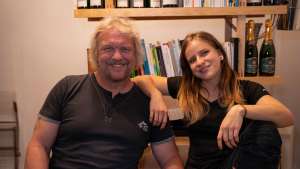 PowerPlay is an approach to fitness which incorporates a playful and experimental mindset. Fozzy (aka Prof. Dr. Eckehard Moritz) heads the innovation consultancy Innovationsmanufaktur in Munich and Raluca Muntean is a designer and acrobat also living in Munich. View the recent work from Powerplay here:
PowerPlay is an approach to fitness which incorporates a playful and experimental mindset. Fozzy (aka Prof. Dr. Eckehard Moritz) heads the innovation consultancy Innovationsmanufaktur in Munich and Raluca Muntean is a designer and acrobat also living in Munich. View the recent work from Powerplay here:  Petra is a Global Marketing professional and dance company founder based in Jersey City, NJ. She balances her love of Excel spreadsheets with her passion for contemporary choreography, all while cuddling her two cats, Basil & Poppy.
Petra is a Global Marketing professional and dance company founder based in Jersey City, NJ. She balances her love of Excel spreadsheets with her passion for contemporary choreography, all while cuddling her two cats, Basil & Poppy. Sara: “Hi everyone, I’m Sara and I am an American living in Germany. On my youtube channel,
Sara: “Hi everyone, I’m Sara and I am an American living in Germany. On my youtube channel,  Poonam is born, raised, and educated in New Jersey, and she currently lives and works in Brooklyn. She is a curriculum development manager at a leading edtech company; outside of her corporate 9am-5pm, Poonam runs a very small business that sells authentic masala chai kits inspired by her mum’s top secret recipe. Check out @
Poonam is born, raised, and educated in New Jersey, and she currently lives and works in Brooklyn. She is a curriculum development manager at a leading edtech company; outside of her corporate 9am-5pm, Poonam runs a very small business that sells authentic masala chai kits inspired by her mum’s top secret recipe. Check out @ Trevor May is a cinematographer and filmmaker from Atlanta, GA. His focus is primarily on documentary storytelling but has worked in narrative, commerical and music videos as well.
Trevor May is a cinematographer and filmmaker from Atlanta, GA. His focus is primarily on documentary storytelling but has worked in narrative, commerical and music videos as well.
3 Comments Add yours